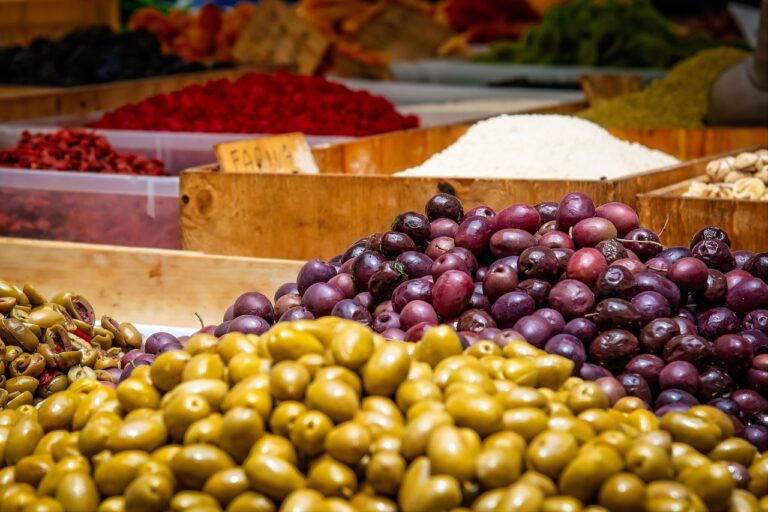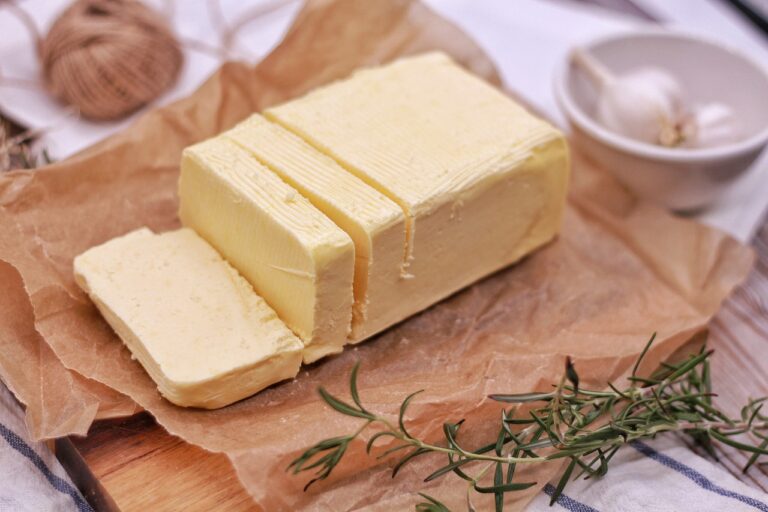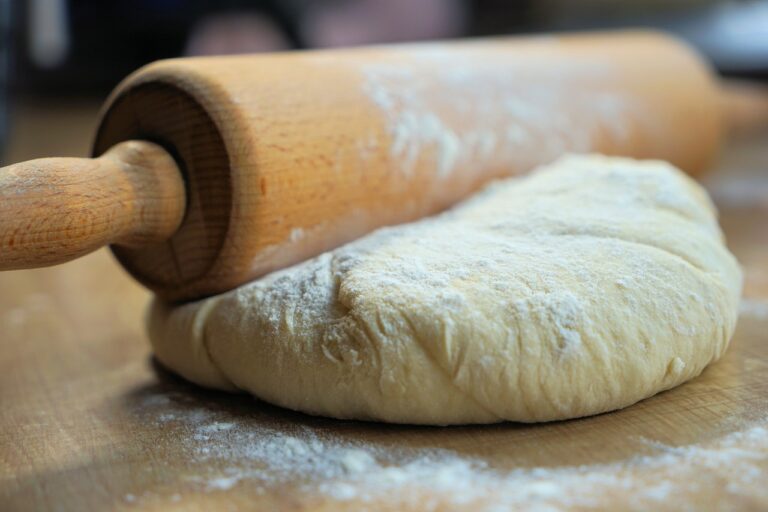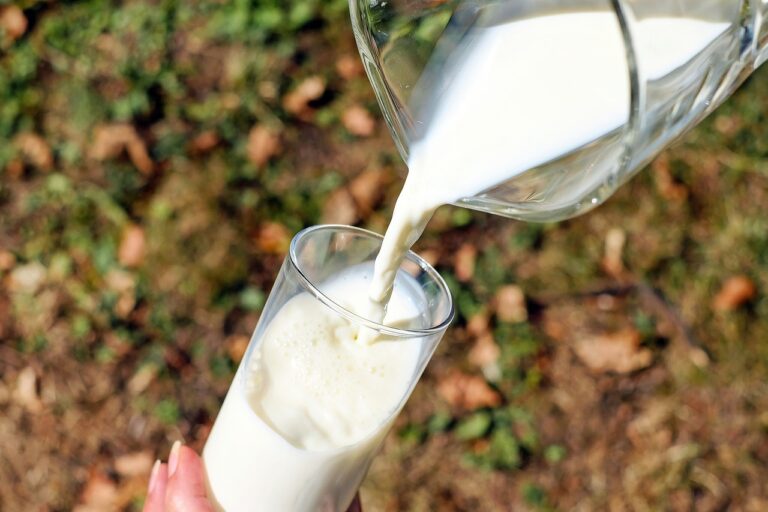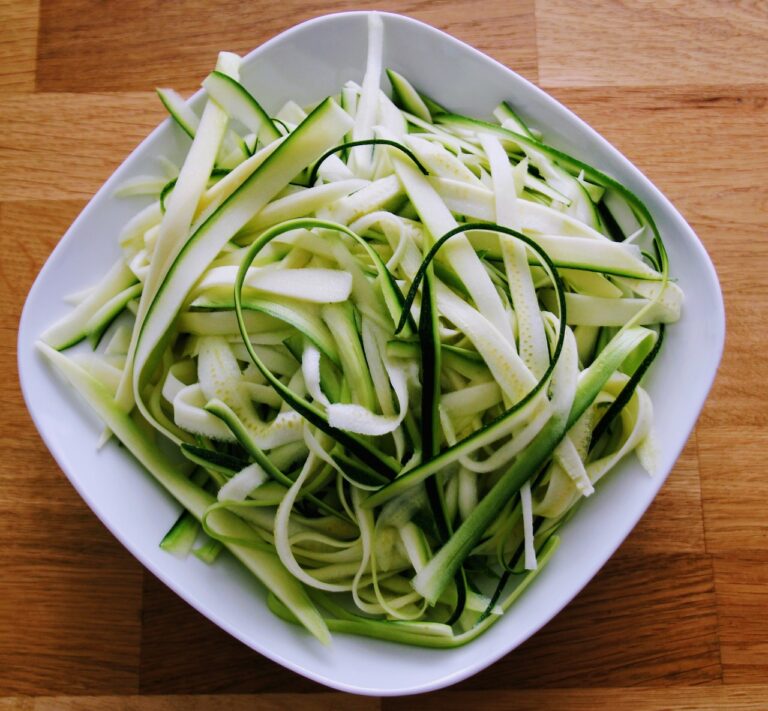10 Interesting Reasons Why You Are Craving Bread
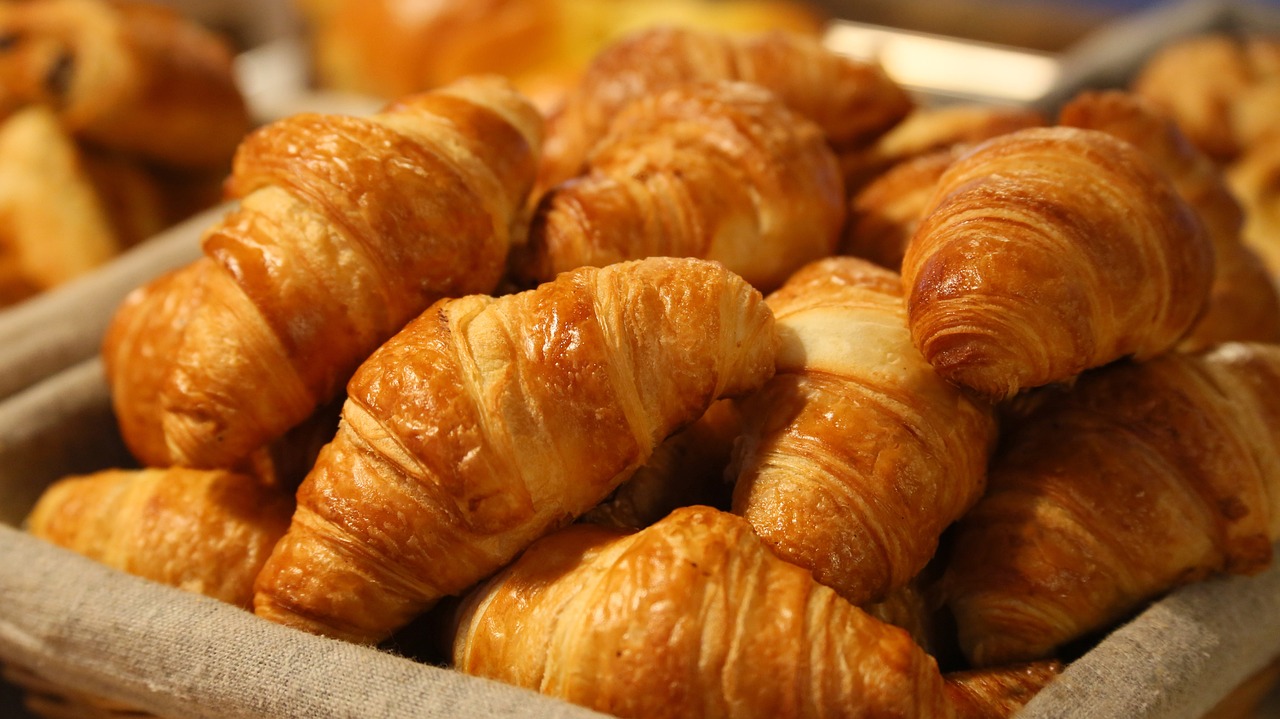
Bread, one of humanity’s most ancient and beloved foods, has woven itself into the fabric of our culture, religion, and daily life. Its scent, taste, and texture often evoke powerful emotions and memories, making it an irresistible staple in many households. But why do we find ourselves so frequently yearning for a slice of this yeasty delight? Let’s delve into ten compelling reasons behind our insatiable craving for bread.
Why Am I Craving Bread?
1. Evolutionary Link
Our ancestors relied heavily on grains as a primary source of sustenance. This reliance has shaped our biology and psychology, making us naturally inclined to seek out grains as an energy source.
Bread, being a product of grains, has served as a staple in human diets for millennia. The body recognizes it as a source of quick energy, making it a preferred choice when we’re hungry. Moreover, evolutionarily speaking, those who had a penchant for high-calorie foods like bread had a better chance of survival during lean times, which might explain our ingrained love for it.
2. The Pleasure of Carbohydrates
Bread is rich in carbohydrates, which stimulate the release of serotonin in the brain. This neurotransmitter is often referred to as the “feel good” chemical, enhancing our mood and overall sense of well-being.
When we consume bread, our body quickly converts its carbohydrates into glucose, providing an immediate energy boost. This rapid energy influx, coupled with the serotonin release, creates a pleasurable experience, making bread a sought-after comfort food for many.
3. Versatility in Cuisine
The sheer versatility of bread, with its myriad forms and functions, makes it a beloved part of countless dishes around the world.
From sandwiches to soups, bread plays a role in both humble and gourmet dishes. Its ability to adapt to various culinary traditions and tastes ensures that it remains an indispensable part of our meals, thereby reinforcing our continual craving for it.
4. Emotional Connections
Bread often holds sentimental value, being associated with family gatherings, festive occasions, and comforting memories from our childhood.
For many, the aroma of freshly baked bread brings back memories of home, love, and warmth. This emotional connection intensifies our cravings, turning bread into much more than just food – it becomes a symbol of comfort and nostalgia.
5. Satisfying Texture
The unique texture of bread, which ranges from soft and fluffy to crusty and chewy, offers a satisfying sensory experience.
Each bite of bread can be a delightful play of textures, from the crunchy crust to the tender inside. This multi-sensory enjoyment contributes to its irresistible nature, making us yearn for it even more.
6. Cultural Significance
Throughout history, bread has held deep cultural and religious significance in various societies, symbolizing sustenance, life, and prosperity.
Many rituals, stories, and traditions revolve around bread. As a result, our craving for bread is not just physical but also deeply rooted in our collective consciousness, connecting us to our ancestors and shared cultural narratives.
7. The Scent of Fresh Bread
The tantalizing aroma of freshly baked bread has a profound effect on our senses, triggering salivation and an intense desire to eat.
Research has shown that the smell of baking bread can evoke feelings of happiness and security. This scent is so universally appealing that some businesses even use it strategically to attract customers.
8. Health Benefits
While there are various types of bread, whole grain and sourdough variants are particularly nutritious, packed with essential vitamins, minerals, and dietary fiber.
The health benefits of certain bread types further enhance our inclination towards them. Knowing that something is not only delicious but also nutritious makes the indulgence feel justified, amplifying our cravings.
9. Bread as a Social Bond
Sharing bread has historically been a gesture of friendship, trust, and community.
The act of breaking bread together fosters a sense of unity and camaraderie. This social aspect of bread consumption might be another underlying reason for our strong affinity towards it, as it embodies shared moments and connections.
10. Economical and Accessible
Bread is often affordable and readily available, making it an easy choice for satiating hunger.
Its accessibility across cultures and economic strata means that for many, bread is a go-to food item. The ease with which it can be procured and its cost-effectiveness further reinforce our desire for it.
Always Craving Bread
The irresistible allure of bread is something many can relate to. It’s not just about its tantalizing aroma or the comforting texture; the craving for bread seems to be an ever-present force in many of our lives. Bread, with its rich history and cultural significance, has become more than just a staple food.
Scientifically, our consistent yearning for bread can be attributed to its carbohydrate content, which provides a quick energy boost and stimulates the release of serotonin, the ‘feel good’ neurotransmitter. Emotionally, it holds memories of family gatherings, shared meals, and moments of comfort, further strengthening our perpetual desire.
Body Craving Bread
Sometimes, our body craves bread due to specific physiological needs. Carbohydrates serve as the primary energy source for our brain and muscles. After an energy-depleting activity or when we’ve been restricting carbs for a while, our body might signal a need for bread to replenish glycogen stores.
Additionally, bread is a source of dietary fiber, especially when chosen wisely like whole grains or seeded varieties. Fiber aids digestion and promotes gut health. Hence, if your body is in need of fiber, you might find yourself longing for a hearty slice.
Bread Craving Substitute
While bread is undeniably delightful, some people look for alternatives, either due to dietary restrictions or a desire to diversify their carb sources. Cauliflower bread or “cauliflower toast” has gained popularity as a low-carb substitute, retaining a similar texture and satisfaction as regular bread.
Another great substitute is almond or coconut flour-based bread, which is both gluten-free and low in carbs. These bread alternatives not only satiate the bread craving but also offer unique tastes and nutritional benefits, such as additional protein and healthy fats.
Craving Banana Bread
Banana bread is a sweet, moist treat that finds its way into many of our hearts (and ovens). Its comforting taste, coupled with the sweet aroma of ripe bananas, makes it a popular choice among baked goods. Beyond its deliciousness, banana bread is often linked to fond memories, perhaps of a grandmother’s recipe or a childhood snack.
Interestingly, craving banana bread might also point to a need for mood-enhancing foods. Bananas are rich in tryptophan, which the body converts into serotonin. Combining the serotonin boost from both bananas and the carbohydrates from the bread itself, banana bread can indeed be a slice of happiness.
Craving Bread After Workout
Post-workout, our muscles are depleted of glycogen, and the body seeks quick sources of energy for recovery. Bread, being rich in carbohydrates, is a readily accessible source that can quickly restore these energy levels, explaining the intensified craving after a strenuous session.
Additionally, consuming bread with a protein source post-workout can be beneficial. The combination aids muscle repair and growth. A turkey sandwich or whole grain bread with peanut butter, for instance, can be both satisfying for the palate and nourishing for the body.
Craving Bread And Butter
The classic pairing of bread and butter is more than just a culinary delight. The creamy richness of butter complements the texture of bread, creating a harmonious taste experience. From a nutritional standpoint, butter provides fats, which when combined with the carbs from bread, results in a prolonged energy release.
Culturally, bread and butter represent simplicity and comfort. This combination, often introduced to us at a young age, can evoke memories of simpler times, making the craving deeply emotional and nostalgic.
Craving Bread And Butter Pickles
Bread and butter pickles, with their unique sweet and tangy flavor profile, add an exciting twist to the bread experience. The craving for this combo might stem from a desire for a balance of flavors – the sweetness of the pickles juxtaposed with the savory notes of bread.
Moreover, pickles are fermented, providing the gut with beneficial probiotics. This could mean that a craving for bread and butter pickles might not just be about taste but also a subtle signal from our gut, seeking balance and health.
Craving Bread And Cheese
Bread and cheese, a pairing celebrated worldwide, combine the earthy, yeasty notes of bread with the creamy, umami-rich flavors of cheese. This duo satisfies multiple taste receptors, making it an indulgence hard to resist.
Historically, both bread and cheese have been staples in many diets, providing sustenance and energy. The act of sharing bread and cheese can be seen in many cultures, signifying hospitality, friendship, and communal bonds.
Craving Bread And Chocolate
Combining bread with the rich decadence of chocolate is a treat for the senses. This craving often points towards a need for comfort and indulgence, as both bread and chocolate are associated with pleasure and reward in the brain.
Scientifically, chocolate contains compounds like phenylethylamine, which can elevate mood. So, the combination of serotonin-boosting carbs from bread and the mood-enhancing properties of chocolate makes this pairing a go-to for emotional upliftment.
Craving Bread And Jam
The sweetness of jam paired with the subtle savory notes of bread creates a delightful taste experience, reminiscent of breakfasts and teatime treats. Jams, with their fruit content, add a burst of flavor and texture to the bread, making each bite a mix of creamy, crunchy, and soft.
Bread and jam can also be symbolic of comfort and simplicity. For many, it’s a reminder of childhood mornings, family breakfasts, and the uncomplicated joys of life. The craving often transcends the mere taste, delving deep into the realms of nostalgia and warmth.
Craving Bread And Salt
The combination of bread and salt is primal and deeply satisfying. Salt enhances the natural flavors of food, making the inherent taste of bread even more pronounced. In many cultures, bread and salt symbolize hospitality and are offered to guests as a sign of welcome and blessing.
From a physiological standpoint, salt is essential for our bodies, playing a vital role in fluid balance and nerve function. Sometimes, after sweating or during periods of increased physical activity, our bodies might crave salt to restore balance. Pairing it with bread creates a fulfilling and grounding culinary experience.
Craving Bread And Sugar
Sweet spreads on bread, whether it’s jam, honey, or any form of sugar, represent a treat that spikes our dopamine levels, the pleasure neurotransmitter. The craving for this combination can often be tied to a need for quick energy. Sugar provides immediate glucose, and bread’s carbohydrates offer sustained energy.
However, repeatedly giving in to this craving can lead to health concerns, including spikes in blood sugar. It’s essential to recognize when the body genuinely requires energy versus when we are seeking emotional comfort through the familiar sweetness of bread and sugar.
Craving Bread At Night
Nighttime cravings, especially for comfort foods like bread, are common. These cravings can arise from various factors. Some might be psychological, such as stress or boredom, while others are physiological, like a genuine need for nutrients or energy before sleep.
For many, bread at night is a ritual, maybe a late-night sandwich or toast before bedtime. It’s essential, however, to discern between habitual eating and genuine hunger, ensuring that nighttime bread indulgences do not hamper overall health goals.
Craving Bread During Period
Many women experience specific food cravings during their menstrual cycle, and bread is often high on the list. These cravings can be attributed to fluctuating hormone levels. The body requires more energy during this time, and bread, as a rich source of carbohydrates, fits the bill perfectly.
Additionally, the serotonin boost from consuming bread can help counteract mood swings or feelings of sadness that some women experience during their period. Bread acts as both an emotional and physical comforter during these times.
Craving Bread During Pregnancy
Pregnancy brings about a whirlwind of changes in the body, including altered dietary needs and preferences. For many pregnant women, bread becomes a go-to food. Its blandness can be soothing for those experiencing nausea, and its carbohydrate content can provide the much-needed energy for the growing baby and the mother.
Furthermore, bread can act as a filler, preventing long gaps between meals, which can lead to morning sickness or acid reflux. As with all cravings during pregnancy, it’s essential to balance indulgence with nutrition, ensuring both the mother and baby receive a well-rounded diet.
Craving Bread Gluten Free
In today’s health-conscious world, many are opting for gluten-free diets, either due to celiac disease, gluten sensitivity, or personal preference. However, the craving for bread doesn’t disappear. Thankfully, numerous gluten-free bread alternatives made from almond flour, coconut flour, or other grain-free sources satiate this desire.
These bread alternatives not only fulfill the craving but also offer unique flavors and textures. The rise in demand for gluten-free options has led to increased availability, ensuring that those avoiding gluten don’t miss out on the joys of bread.
Craving Bread Spiritual Meaning
In many religions and cultures, bread holds deep spiritual significance. It symbolizes life, sustenance, and God’s provision. The craving for bread, when looked at from a spiritual lens, can signify a deeper yearning for connection, nourishment of the soul, or a return to one’s roots.
Communal rituals, like the breaking of bread in Christianity or the Sabbath bread in Judaism, underscore bread’s spiritual dimension. For many, the act of consuming or craving bread transcends the physical, hinting at a deeper existential or spiritual quest.
Craving Bread When Sick
When unwell, our body often gravitates towards comfort foods. Bread, with its soft texture and neutral taste, can be soothing, especially for those with reduced appetites or digestive issues. It’s easy on the stomach and provides quick energy, aiding in recovery.
Moreover, the emotional comfort associated with bread – the memories of being cared for or fed toast when sick as a child – can also play a role in this craving. Bread, in these situations, serves as both a source of physical nourishment and emotional solace.
Craving Brown Bread
Brown bread, made from whole grains, is packed with nutrients and dietary fiber. A craving for brown bread might indicate the body’s need for these essential nutrients or a more general desire for something hearty and fulfilling.
Given the growing awareness of the health benefits associated with whole grains, many people now consciously choose brown bread over its refined counterparts. This choice, while sometimes health-driven, can also be influenced by the rich, earthy taste of whole grain bread.
Craving Crusty Bread
The unique allure of crusty bread lies in its delightful contrast of textures – the crispy, crunchy crust and the soft, airy interior. Craving this type of bread can stem from a desire for varied sensory experiences during eating.
From a cultural perspective, crusty breads like baguettes or sourdough loaves are integral to many global cuisines. For those with cultural or familial ties to these bread types, the craving might also carry hints of nostalgia and memories of shared meals.
Craving Dough Bread
There’s something inherently comforting about the soft, pillowy texture of doughy bread. Whether it’s freshly baked dinner rolls or the chewy interior of a thick crust pizza, the semi-cooked consistency offers a unique mouthfeel that many find irresistible.
From a psychological standpoint, doughy breads can evoke memories of homemade baked goods, where perhaps the bread was pulled out of the oven just a tad early, or the center of a large loaf remained soft and moist. This craving might not just be for the texture, but for the warmth and nostalgia associated with family meals and gatherings.
Craving Fresh Bread
The aroma of fresh bread wafting through the air is one of life’s simple pleasures. Craving fresh bread is not just about the taste; it’s the entire experience — the warmth, the scent, and the softness. Fresh bread symbolizes home, comfort, and a baker’s dedication.
Scientifically, the smell of fresh bread has been shown to induce positive feelings and even make people kinder to strangers. The combination of aromatic compounds produced during baking taps into our brain’s pleasure centers, making the craving for fresh bread both physiological and emotional.
Craving Fried Bread
Fried bread, whether it’s the classic British “fried slice,” Native American “frybread,” or the Indian “puri,” holds a special place in many cuisines. The crispy exterior combined with a soft interior offers a delectable contrast, and the added richness from frying makes it an indulgent treat.
Craving fried bread can be attributed to the body’s desire for high-energy, calorie-dense foods. Fats, like those absorbed during frying, are energy-rich and can provide a quick caloric boost. Moreover, the combination of carbs and fats stimulates the brain’s reward centers, making fried bread a go-to comfort food for many.
Craving Garlic Bread
Garlic bread, with its buttery richness infused with the aromatic goodness of garlic, is a favorite side dish for many. The savory notes of garlic paired with the softness of bread create a flavor profile that’s hard to resist.
Beyond flavor, garlic has numerous health benefits, including anti-inflammatory and immune-boosting properties. While it’s a stretch to say one craves garlic bread for health reasons, our bodies sometimes lean towards foods that offer both nutrition and comfort. Garlic bread, in this context, satisfies on multiple levels.
Craving Gingerbread
Gingerbread, with its warm spices and sweet molasses undertones, is often associated with festive occasions and cozy winter evenings. The craving for gingerbread might be tied to the comforting mix of spices like ginger, cloves, and cinnamon, which not only warm the palate but also have various health benefits.
From a psychological perspective, gingerbread often evokes memories of holidays, family gatherings, and traditions. The intricate gingerbread houses and festive cookies are not just treats but symbols of joy, celebration, and shared moments.
Craving Meat And Bread
The combination of meat and bread has been a culinary staple for centuries, manifesting as sandwiches, burgers, wraps, and more. The protein from the meat paired with the carbohydrates from the bread offers a balanced, fulfilling meal.
Craving this combo might indicate the body’s need for a diverse nutrient profile. While bread provides quick energy, meat offers protein essential for muscle repair and growth. Emotionally, meat and bread together can symbolize hearty, wholesome meals, satisfying not just the stomach but also the soul.
Craving Milk And Bread
Milk and bread, often considered essentials in many households, represent nourishment and simplicity. Dunking bread in milk or consuming them together can be a comforting ritual for many. The smooth, cool texture of milk complements the softness of bread, creating a simple yet satisfying combination.
Nutritionally, milk provides calcium and protein, while bread offers carbohydrates and fiber. Together, they can create a well-rounded snack or meal, providing the body with a range of essential nutrients.
Craving Plain Bread
There’s beauty in simplicity, and plain bread embodies this principle. Without the distractions of added flavors or ingredients, one can truly appreciate the subtle yeasty notes, the soft crumb, and the comforting consistency of bread.
Craving plain bread might be a desire for uncomplicated, genuine flavors. In a world bursting with complex culinary creations, sometimes our palate yearns for the straightforward and authentic. Plain bread serves as a blank canvas, allowing us to appreciate bread in its purest form.
Craving Pumpernickel Bread
Pumpernickel, a dense, dark bread of German origin, offers a unique flavor profile with its slightly sweet and sour undertones. Made with coarsely ground rye grains and often incorporating ingredients like molasses or cocoa, pumpernickel stands out in the world of bread.
Craving pumpernickel might be tied to its distinctive taste, which offers a departure from the usual bread flavors. Additionally, rye, the primary grain in pumpernickel, has numerous health benefits, including aiding digestion and promoting heart health. Thus, this craving can also be the body’s subtle way of seeking these nutritional benefits.
Craving Raisin Bread
Raisin bread, with its sweet pockets of dried fruit interspersed within soft, fluffy bread, strikes the perfect balance between sweet and savory. The natural sugars in the raisins provide bursts of sweetness, elevating the bread-eating experience.
Beyond taste, raisins are rich in fiber, vitamins, and minerals. A craving for raisin bread could be the body’s way of seeking these nutrients. Additionally, for many, raisin bread can evoke memories of breakfasts past, making it a treat that satisfies both the palate and the heart.
Craving Rye Bread
Rye bread, often characterized by its deep, earthy flavors and dense texture, holds a prominent place in several culinary traditions, especially in Northern and Eastern Europe. Rye, as a grain, brings a complex flavor profile that distinguishes it from traditional wheat bread.
The craving for rye bread could be attributed to its rich nutrient content. Rye is packed with dietary fiber, vitamins, and minerals, making it a wholesome choice for bread lovers. Beyond its health benefits, the distinct taste of rye bread can be an acquired preference, with many individuals growing to love its hearty and robust character.
Craving Sourdough Bread
Sourdough, with its signature tang and chewy crust, has seen a resurgence in popularity due to its unique fermentation process and profound depth of flavor. The natural fermentation not only gives sourdough its characteristic sour taste but also makes it more digestible and nutritious than many other bread types.
Craving sourdough might be a reflection of one’s palate seeking complexity and depth in flavor. Moreover, the probiotics resulting from the fermentation process can be beneficial for gut health. Thus, a yearning for sourdough can be both a gourmet preference and the body’s way of seeking beneficial microbes.
Craving Sweet Bread
Sweet breads, whether they’re brioche, challah, or cinnamon rolls, have a comforting allure that’s hard to resist. The combination of the soft, pillowy texture of bread with sweet undertones creates a delightful treat that many crave.
The desire for sweet bread often arises from the brain’s response to sugar, which releases feel-good chemicals like serotonin and dopamine. Additionally, sweet breads are often associated with festive occasions, celebrations, and special breakfasts, making the craving also tied to joyful memories and traditions.
Craving Warm Bread
Warm bread, straight out of the oven, offers an experience that goes beyond taste. The warmth, combined with the aroma and the steam rising from the loaf, creates a multi-sensory delight. The comforting feeling of biting into a slice of warm bread is unparalleled.
From a biological standpoint, warm foods can be soothing and give a sense of satiety. The craving for warm bread, specifically, might also be tied to memories of home, family gatherings, or the simple pleasure of enjoying freshly baked goods.
Craving Wheat Bread
Wheat bread, a staple in many diets worldwide, is a rich source of nutrients and dietary fiber. The nutty, wholesome taste of wheat bread offers a different experience compared to white bread, which is made from refined flour.
Craving wheat bread might indicate the body’s desire for a more nutrient-dense food source. The complex carbohydrates in wheat bread provide sustained energy, and its dietary fiber aids digestion. For many, choosing wheat bread over white is a conscious health decision, but the craving can also stem from a genuine preference for its richer taste.
Craving White Bread And Butter
The simple pairing of white bread and butter is a timeless classic. The softness of the bread complemented by the richness of butter creates a harmonious blend of textures and flavors. It’s a combination that harks back to simpler times and basic, unadulterated pleasures.
Beyond the taste, our brain is wired to enjoy foods high in fats and carbohydrates, and this combo perfectly hits the mark. The fat from the butter and the carbs from the bread stimulate the brain’s reward system, making this pairing a go-to comfort food for many.
Craving Yeast Bread
Yeast bread, characterized by its soft crumb and the distinct aroma imparted by the fermentation process, is a favorite for many. The unique flavor profile of yeast bread, which can range from mildly tangy to profoundly savory, offers a depth that sets it apart from other bread varieties.
The craving for yeast bread could be attributed to its rich, savory flavors and the satisfaction derived from its fluffy texture. Additionally, the act of baking yeast bread, watching it rise and transform, can also be a therapeutic experience, making the craving not just about consumption but also about creation.
How To Stop Craving Bread
While bread is undeniably delicious and comforting, excessive cravings can sometimes hinder health goals, especially for those watching their carbohydrate intake or managing conditions like diabetes. Recognizing and understanding the source of the craving is the first step.
Cravings can be a mix of psychological and physiological factors. Sometimes, the body craves bread for quick energy, while at other times, emotional factors like stress or nostalgia play a role. Finding alternative sources of energy, incorporating whole grains, and practicing mindful eating can help manage and even curb these cravings. It’s also beneficial to ensure a balanced diet, where bread complements other nutrient sources rather than dominating the plate.
Intense Craving For Bread
An intense craving for bread can sometimes be overwhelming. Such a craving can be indicative of a deficiency in certain nutrients, especially if one’s diet is lacking in carbohydrates. Carbs are the body’s primary energy source, and a sudden reduction can lead to strong cravings.
On the other hand, emotional factors can also lead to intense cravings. Situations of stress, sadness, or even sheer boredom can make one yearn for comfort foods like bread. Recognizing the underlying cause is essential. While it’s okay to indulge occasionally, it’s crucial to ensure that bread consumption is balanced and doesn’t lead to overeating or neglect of other essential nutrients.
Sudden Craving For Bread
A sudden, out-of-the-blue craving for bread can be puzzling. It might be triggered by external cues, like the smell of a bakery or seeing someone enjoy a sandwich. Environmental factors play a significant role in our food choices and cravings.
Physiologically, a sudden desire for bread could indicate a drop in blood sugar levels, making the body seek quick sources of energy. On the emotional front, memories associated with bread, perhaps from childhood or specific life events, can suddenly surface, leading to an immediate yearning. Being attuned to one’s body and emotions can help decode and address these sudden cravings.
Toddler Craving Bread
Toddlers, with their rapidly growing bodies and ever-changing tastes, can sometimes show strong preferences for certain foods. Bread, being soft, easy to eat, and generally neutral in flavor, can become a favorite for many toddlers.
While it’s essential to ensure a varied diet for toddlers, occasional bread cravings are not harmful. Bread can be a vehicle for other nutritious foods, like spreads, veggies, or meats, turning it into a wholesome meal. However, if a toddler consistently demands bread and refuses other foods, it might be wise to consult a pediatric nutritionist to ensure a balanced diet and address any potential underlying issues.
Conclusion
Bread, in its many forms and flavors, holds a special place in our hearts and stomachs. From its deep-rooted historical significance to its undeniable sensory appeal, the reasons behind our craving for bread are manifold. As we continue to break bread together, it remains a testament to our shared human experience, connecting us through time, culture, and taste.

